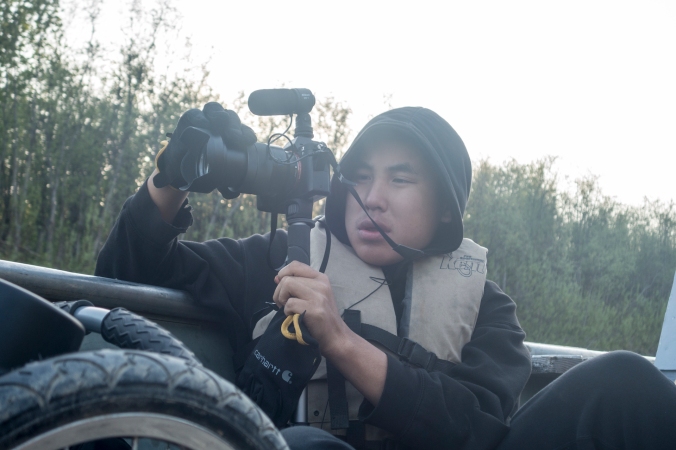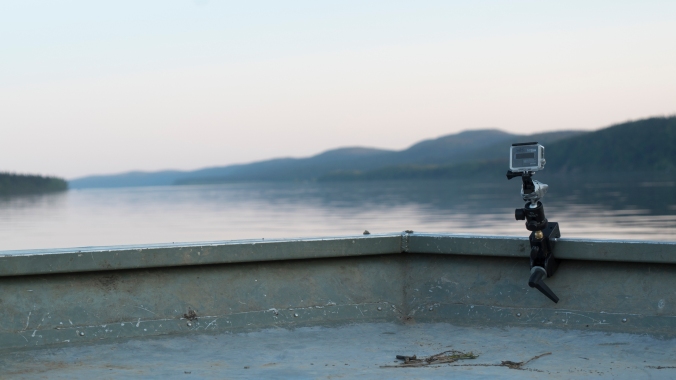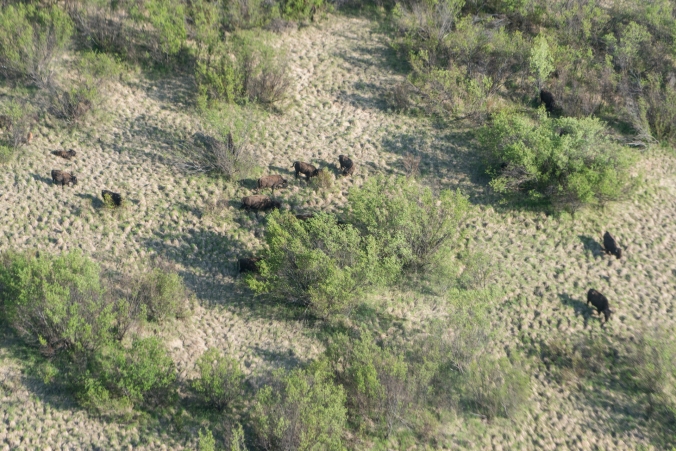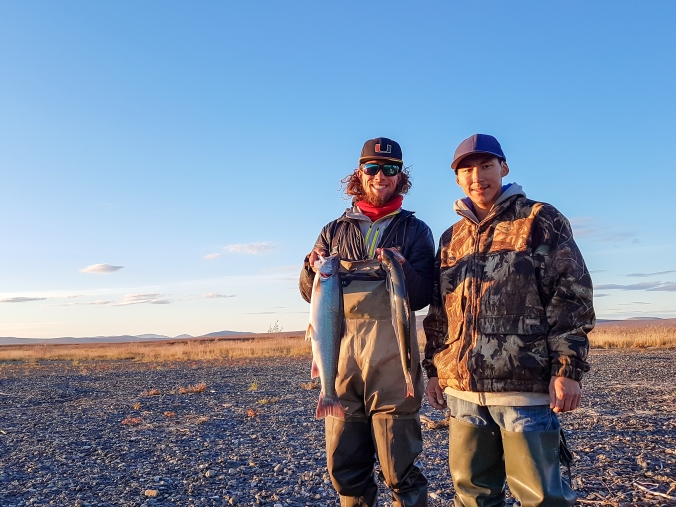
WCS researcher Kevin Rodriguez and local Kivalina resident Kyle Sage with Dolly Varden char on the banks of the Wulik River near Kivalina, in northwest Alaska.
Even the most devoted scientists seldom surpass the level of environmental knowledge acquired by those who spend their entire lives surviving off of the land. Information passed down through generations has allowed subsistence cultures to cultivate a comprehensive understanding of the ecosystem, complete with the subtleties only experienced while living a subsistence lifestyle fully dependent on natural resources. We recently witnessed this knowledge first hand on a trip to the Wulik River.
It all began earlier in the field season, through a fortuitous encounter with some residents of the village of Kivalina who were out hunting late summer caribou near Kotlik Lagoon. They invited us to fish with them for Dolly Varden on the Wulik, where you can catch world-class specimens. The Wulik originates in the De Long Mountains of the Northwest Arctic, flows southwest into Kivalina Lagoon and empties into the Chukchi Sea. For the village of Kivalina, the Wulik serves as a primary source of food fish, including trout and whitefish. The river also functions as a navigable route to the inland caribou hunting locations and up-river camps of many Kivalina locals.
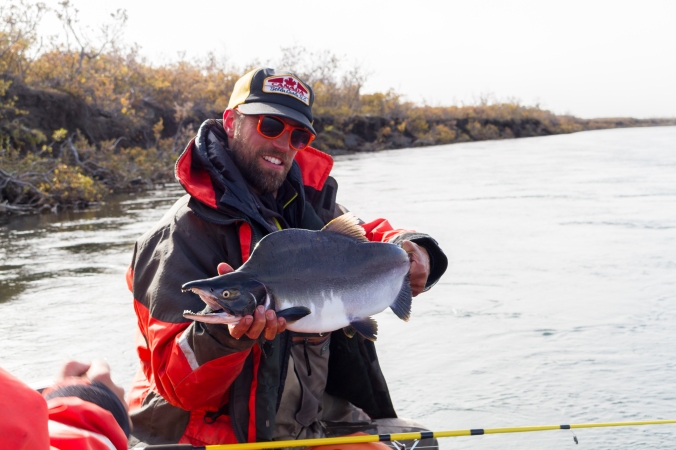
Trevor Haynes with a pink salmon.
It didn’t take much convincing for us to pack our bags and head to the Wulik River to learn about subsistence fishing from Kivalina residents. As we approached the river by bush plane, we could already see hundreds of fish from the air. We were dropped off 13 straight-line-miles upriver from Kivalina, beside a small mountain ridge, which we later learned is used by local hunters to spot game migrating along the tundra. “We call it Mt. Jarvis. We climb up there in the morning, sit and drink coffee and use our binoculars to find the caribou” said Carlos Sage, a local hunter and outdoorsman.
We began our float trip, hoping to travel the 7 or 8 miles between our drop-off point and the spot where Kyle Sage, a local expert fisherman from Kivalina, would meet us. We stopped to fish along the way, catching several species, including Chum Salmon, King Salmon, Grayling, and the target species, Dolly Varden. Once at our rendezvous point we met up with Kyle who had already landed some huge trout.
Dolly Varden trout (Salvelinus malma) is a semi-anadromous or sea-run fish, which spawns in riverine systems along Northwest Alaska during mid-summer and early fall. Kivalina locals take advantage of this spawning migration and target Dolly Varden, both with rod and reel as well as late season gill-nets, catching the fish they will later age and freeze for consumption during the winter months. Throughout many years of trout fishing and harvesting, Kyle has come to know the Wulik like the back of his hand. He knows exactly where the fish should be given the time of year and weather conditions. During our time on the river, Kyle and his companions shared with us their incredible knowledge of the subsistence resources, including how fish use the Wulik River and the coastal lagoons surrounding Kivalina.
“Trout love the deep holes and structure within them”, Kyle told us as he reeled in a true giant. He has learned where all the deep holes are on the river during his winter ice fishing expeditions. When the river freezes, only certain locations hold fish and Kyle has amassed all these “hot spots” into a collection of personal honey holes he can target for the biggest Dolly Varden on the Wulik.
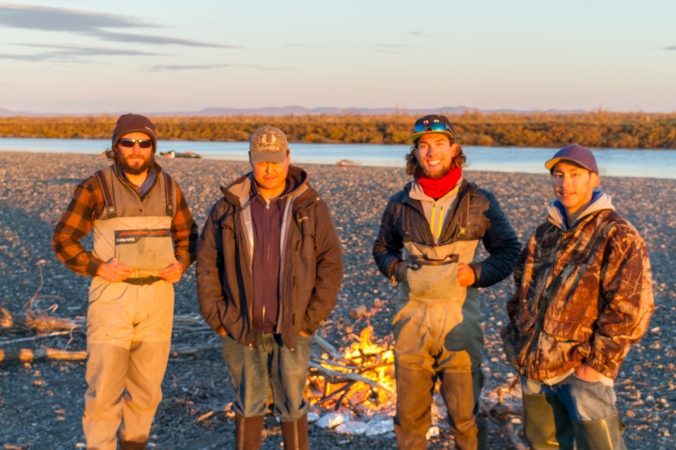
WCS researchers and their local hosts warm up by the fire on the banks of the Wulik River. From left to right, Brian Haggerty Perrault, Virgil Adams, Kevin Rodriguez, and Kyle Sage.
But during his lifetime, the river has begun to drastically change.
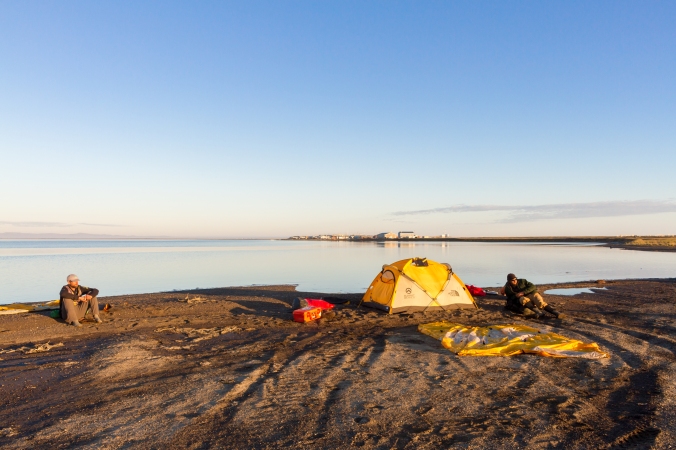
Taking a break from setting up camp near the village of Kivalina, on the Chukchi Sea. Kivalina has been the site of environmental drama in recent years, as it is faced with the decision to relocate the entire village due to climate-related environmental changes.
Kyle told us how ice has been forming later and melting earlier, which has caused a significant change in the fishery. Current NOAA reports say Northwest Alaska’s 2016 winter was the 2nd warmest ever recorded, with temperatures throughout January and March at roughly 28% warmer than normal. Brendan Scanlon, a Northwest/North Slope area biologist from the ADF&G Sport Fish Division, is seeing behaviors from the Dolly Varden that have not occurred in previous years.
“All information from previous tagging studies on the Wulik and Noatak Rivers suggest that this [Spring] was the earliest outmigration of Dolly Varden we have ever observed.” Our research team has been hearing reports from many Arctic Circle locals of increasingly warmer winters, longer ice-free seasons and an overall change in the flora and fauna seen in this region. It is evident that the subsistence lifestyle of the locals depends on resources that are subject to these changes. Climate shifts are altering the patterns that they have been following for thousands of years. The changing climate is changing them.
It was truly a fascinating opportunity to be guided along the meandering shores of this unique arctic freshwater system by Kyle Sage and his companions, whose lives are intimately tied with the waters of this river. Our team looks forward to coming back and sharing more time with the locals of beautiful Kivalina and we’re extremely thankful for the incredible kindness the people of Kivalina showed us and friendships that we made while we were there. The information on trout and whitefish that Kyle and others provided us will help guide our fisheries research. Working with villages such as Kivalina also helps us put our research findings in the context of the subsistence fisheries that support northern communities. We hope that our research will help promote the conservation of the arctic environment and the subsistence lifestyle for generations to come.
Written by Kevin Rodriguez, WCS field technician. October 21, 2016.

